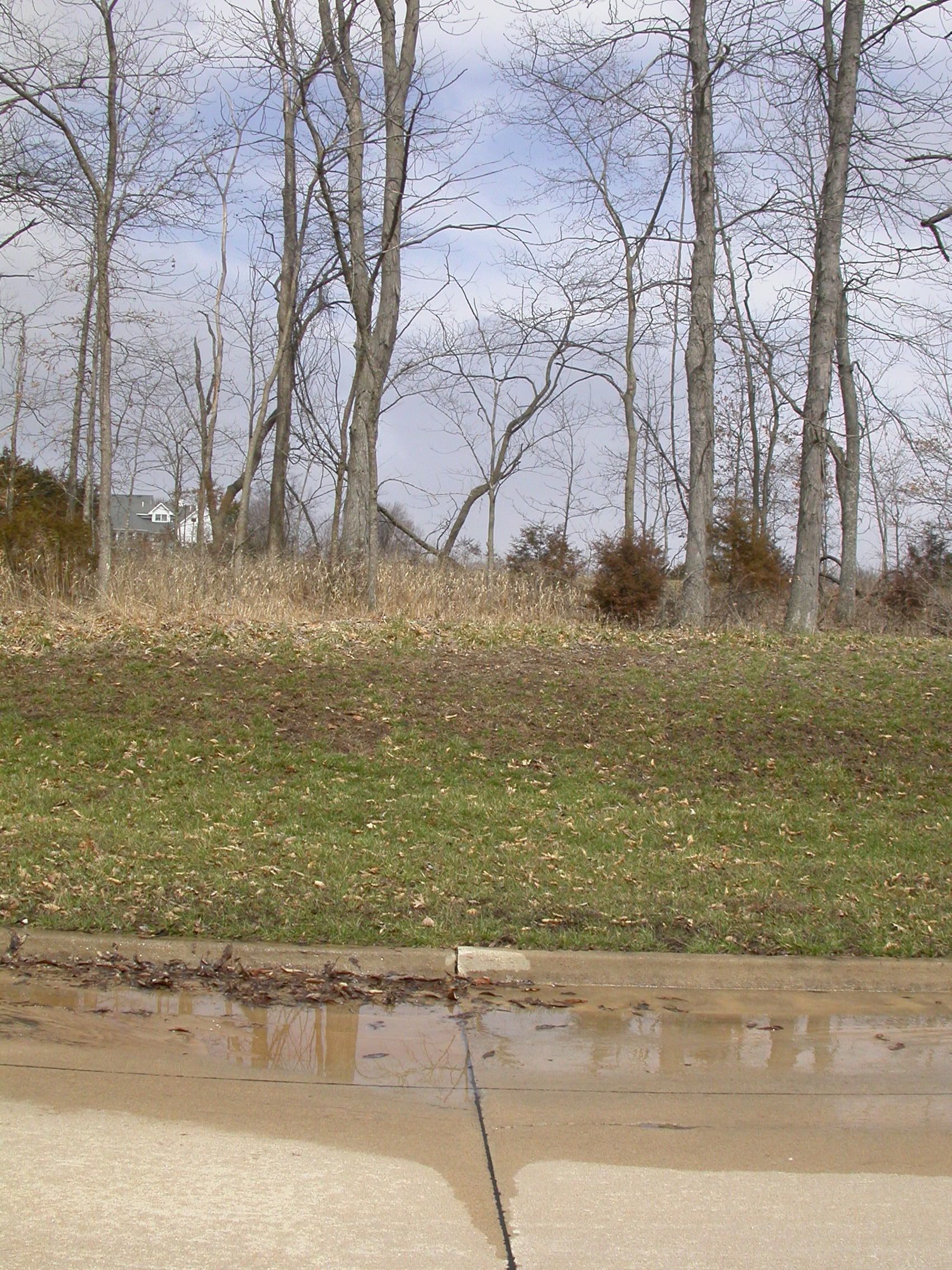(If you are interested in the Pole to Pole videoconference, just scroll down – it’s just below this one. I’m finishing up the puddles blog so that I can write a blog or two on inquiry, using the puddles as my example).
As I was proofreading the puddles blog upon returning to Colorado, I started wondering if the puddle simply had been left behind from the previous week’s rains, and that salt may have kept the puddle from freezing.
I had the opportunity to check this last week, on a second trip to Missouri. Again, there had been rain a few days before I arrived. And again, there was a puddle in the same place. But this time I could see clearly that water was flowing into the puddle (and other places along the road) from gaps in the curb as well as some in the street. You can see this in Figures 11 and 12.

Figure 11. A new puddle (photographed 19 March) at the same location of the one photographed in February, in Columbia, Missouri. Note that water is leaking through a gap in the curb as well as part of the crack.
I also discovered that the puddle was not in a dip in the road, as I had suspected earlier, but it was located in a place the road was nearly horizontal (okay, maybe a very shallow drip): There was actually some flow downhill toward the lowest spot, where water drained into a sewer. Finally, I discovered that the puddle is only about 2 meters (6.6 feet) above the lake.
Figure 12. Closeup of the puddle.
There were other puddles along the road, formed from drainage through gaps in the curb and sometimes gaps in the pavement of the road (most of the cracks in the roadbed are sealed with tar).
After a few days with temperatures rising to around 15 degrees Celsius (59 degrees Fahrenheit, the puddle finally disappeared. Where the water was, a white stain on the road revealed that salt had collected there; and there was drier soil carried along with the water feeding the puddle.
Another day with no puddles convinced me that the pipe connecting the fire hydrants (see earlier parts of this blog) was not leaking.
So, with a little extra data I was able to confirm the hypothesis that the puddle was being fed by subsurface water flowing at least through a gap in the curb (which is ~15 centimeters or 6 inches high) and possibly the crack in the road. Salt clearly also played a role in keeping the water from freezing.
I also found out something else. My brother and sister-in-law’s house was heated and cooled by pumping groundwater up to the house. Remember, the temperature 30 meters (100 feet) down – or even 10 meters (30 feet) down – is close to the average temperature for the whole year (in Columbia, about 13 degrees Celsius or 55 degrees Fahrenheit). So the water pumped up to the surface in the summer will be much cooler than the air temperature, and thus can be used to cool the house. In the winter, the ground water is almost always warmer than the house, so it can be pumped up to warm the house.
But remember – the temperature of the ground water – and the average temperature – is about 13 degrees Celsius (55 degrees Fahrenheit). That’s not warm enough to heat the house in winter, so another method is needed to bring the temperature up from 13 degrees to a more comfortable 20 degrees Celsius (68 degrees Fahrenheit) or so.
Next time: how the investigation of this puddle illustrates the inquiry process – or the “scientific method.”
